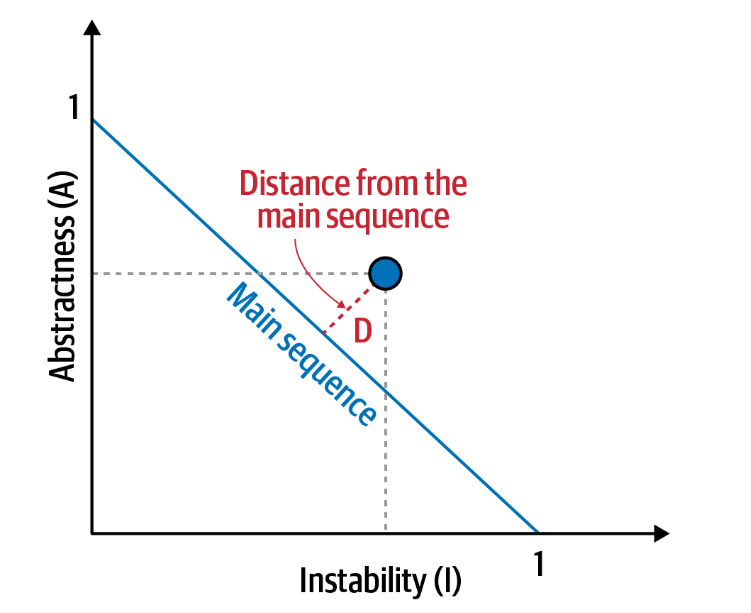
Analyzing Code Coupling
Software code, like the foundation of a building, is layered with complexities, interdependencies, and complications. Architects of software must consider not only the immediate behavior of the code but its long-term scalability, adaptability, and maintainability. At the heart of this is the concept of coupling: how different parts of the code interact, depend, and affect each other.
A Mathematical Approach to Code Coupling
One of the seminal works on this topic, "Structured Design: Fundamentals of a Discipline of Computer Program and Systems Design," was authored by Edward Yourdon and Larry Constantine in 1979. The book introduced the notions of afferent and efferent coupling, concepts rooted in graph theory. The idea is straightforward:
Modern tools, designed to assess software structures across diverse platforms, leverage these mathematical metrics to dissect the coupling characteristics of code. These insights are valuable for restructuring, migrating, or merely understanding a vast codebase.
Beyond Basic Coupling: Abstractness, Instability, and Distance
Coupling is just the beginning. Other metrics refine our understanding of code architecture:
To visualize these relationships, imagine a graph where abstractness and instability are plotted. The "main sequence" line on this graph denotes the ideal blend.
Tools plot components on this graph, helping architects measure their distance from this optimal line. Points close to the line suggest well-balanced components. However, straying too far into either extreme brings its challenges:
Several software analysis tools across platforms provide these metrics, aiding architects in the never-ending task of code optimization, especially when dealing with unfamiliar territories, migration challenges, or technical debt evaluations.
Analyzing Code Coupling with JDepend
As discussed in our article, Coupling forms the backbone of understanding intricate dependencies within your codebase. Delving deeper into this topic, we explore practical steps to analyze these dependencies using the powerful tool JDepend.
Step 1: Installing JDepend
JDepend provides an excellent platform for generating reports on package dependencies. Although the primary GitHub page offers an overview, the installation steps are somewhat nested within the documentation. Here's a step-by-step guide to streamline the process:
Create a directory for JDepend and navigate to it via the terminal:
mkdir jdepend_workspace && cd jdepend_workspace
Download the latest major release:
wget -O jdepend-2.10.zip https://github.com/clarkware/jdepend/blob/master/dist/jdepend-2.10.zip\?raw\=true
Set an environment variable for JDepend:
export JDEPEND_HOME="$(pwd)/jdepend-2.10"
Adjust file permissions:
领英推荐
chmod -R a+x $JDEPEND_HOME
Add the jar file to your classpath:
export CLASSPATH=$CLASSPATH:$JDEPEND_HOME/lib/jdepend-2.10.jar
Now, JDepend should be fully functional on your system!
Step 2: Generating the XML Report
JDepend provides multiple interfaces - graphical, textual, and XML. The XML output is the most beneficial for our purpose as it grants us the flexibility to generate various visualizations.
Run the following command to generate the XML report:
java jdepend.xmlui.JDepend -file report.xml <path-to-the-root-of-your-java-project>/build
This command produces a report.xml file, which will serve as our basis for visualization.
Step 3: Installing JDepend-UI
To enhance our visualization capabilities, we utilize jdepend-ui, a JavaScript-based tool. This tool transforms the XML report into a comprehensive HTML page.
To install it:
Clone the jdepend-ui repository:
git clone [email protected]:ValentinaServile/jdepend-ui.git
Navigate to the cloned directory and install the necessary packages:
cd jdepend-ui && npm install
Step 4: Generating the Final Report
Having jdepend-ui at your disposal, let's generate a detailed HTML visualization:
Execute the following command:
npm run jdepend-ui <path-to-xml-report-file> <your-packages-prefix>
You can just open the generated index.html in your preferred browser.
You'll be greeted with an interactive graph, where each dot signifies one of your packages. The diagram illustrates package dependencies, couplings count, abstractness, instability scores, and more, ensuring a comprehensive analysis of your code's architecture.
Conclusion
The analysis of software architecture, particularly regarding coupling, has evolved from a heuristic approach to a more structured, mathematical one. This transition, fueled by foundational works and modern tools, ensures that as software grows in complexity, architects have the instruments to keep it structured, maintainable, and efficient.
References